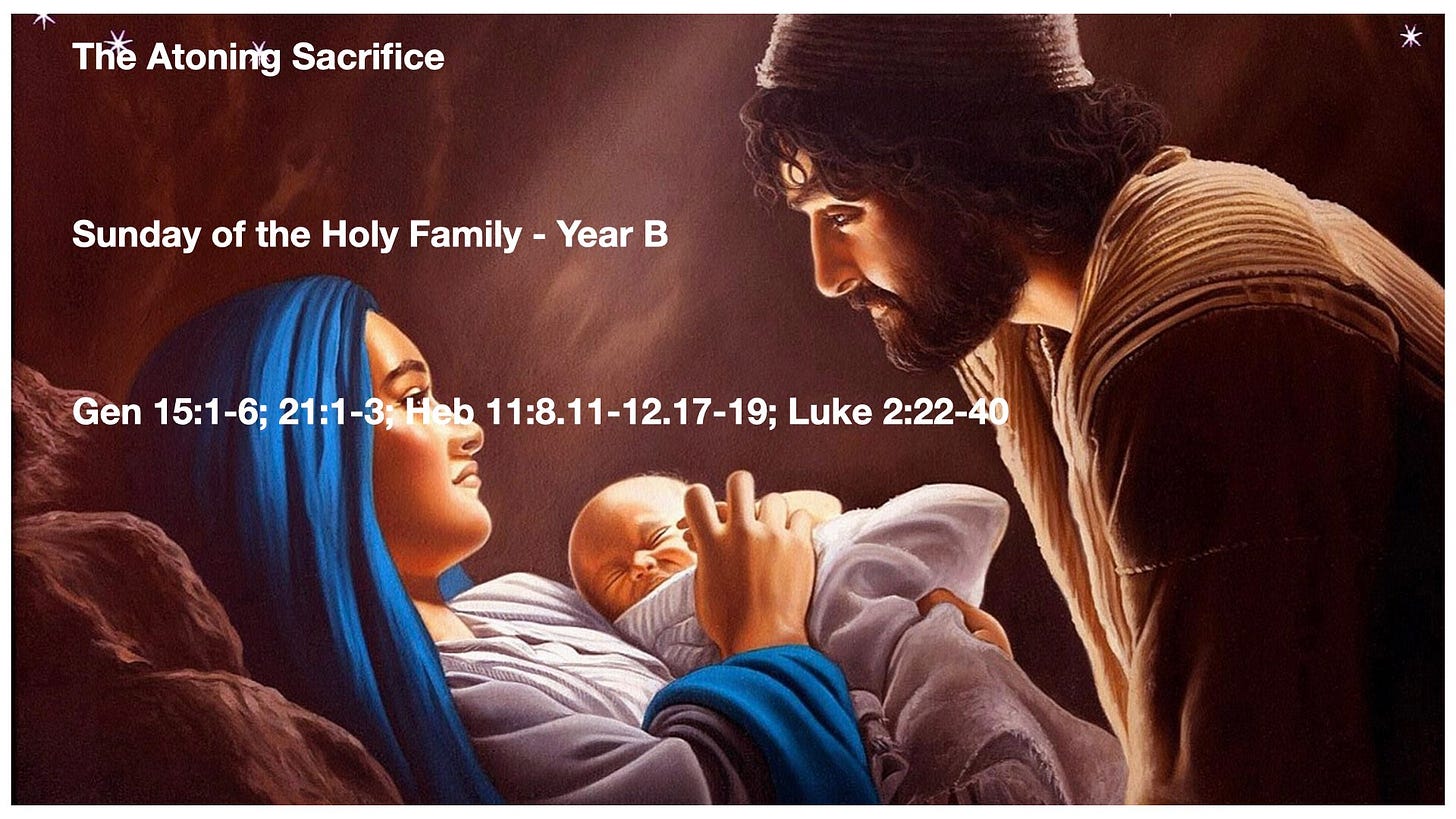Gen 15:1-6; 21:1-3; Heb 11:8.11-12.17-19; Luke 2:22-40
At the beginning of Israel - the people of the Old Covenant - there is a couple: Abraham and Sarah. At the beginning of the Church - the people of the New Testament - there is also a couple: Joseph and Mary. Both couples received from God the promise of a descendant. In the first case, the promise was addressed to Abraham, an old man married to a woman, who had borne him no children (Gen. 16:1). In the second case, the promise was given to the virgin, who did not know and most probably decided not to know “a man" (Luke 1:34, the teaching of John Paul II in “Man and Woman He created them”). Both promises have been realized. Concerning Sarah, the Scripture says: "As the Lord foretold, he took care of Sarah and fulfilled his promise" (Gen. 21:1). And Mary and Joseph are offering today Jesus in the temple (Luke 2:22).
Both sons - Isaac and Jesus - are children of God’s promise. Both mothers, Sarah and Mary, responded to this promise with faith, and by faith, they received the “power for conception” (Heb. 11:11). With the birth of these children, both marriages were transformed into a family. Abraham's family stands at the beginning of Israel, and the Holy Family at the beginning of the Church. However, these families do not stand in opposition to each other. On the contrary. The family of Joseph, Mary, and Jesus is rooted in the family of Abraham, Sarah, and Isaac. "This is the genealogy of Jesus Christ, the son of David, the son of Abraham" (Matt. 1:1). According to Matthew, Joseph was a descendent of David (Matt. 1:2-16, Luke 1:27). Just as the Holy Family has its roots in the family of Abraham, so the Church grew out of Israel. Thus, the promise given to Abraham was fulfilled. "Look at the sky and count the stars if you can count them. So shall Your offspring be. "(Gen. 15:6).
When God's promise meets with faith, miracles follow. When a person believes that nothing is impossible for God and that the Lord has the power to fulfill what He has promised, great things take place. Holding in her arms her only child, Sarah said in astonishment: "Yet I gave birth to a son despite an advanced age" (Gen. 21:7). And Mary cried: "The Almighty has done great things to me" (Luke 1:49). The birth of Isaac was a miracle and so was the birth of Jesus Christ. Under the loving care of their parents, both sons grew and became strong, and God's grace rested upon them (Luke 2:40).
Today Mary and Joseph bring the infant Jesus to the temple in Jerusalem. According to the Chronicles, this temple was built on Mount Moriah (2 Chronicles 3:1), on the same hill where Abraham once offered his son Isaac to God (Gen. 22:2). Moreover, Isaac, while climbing up the mountain, carried the wood for the burnt offering on his shoulders (Gen. 22:6). The same will happen to Christ. On Good Friday he will carry the wood of the cross while climbing the hill of Golgotha. The angel of the Lord restrained Abraham's hand and the great patriarch "obtained [his son] in a parable" (Heb. 11:19). This parable contained a prophecy about the death and resurrection of Jesus.
Nearly two thousand years set the two families apart, and yet how convergent their fate is. In their history, we glimpse at the mystery succinctly expressed by Saint Augustine: "The New Testament lies hidden in the Old and the Old is unveiled/manifested in the New”. In the story of Isaac presented to us in the first (Gen. 21:1-3) and the second reading (Heb. 11:11-12.17-19) lies hidden the mystery of Christ revealed to us today in the scene of Jesus’ presentation in the temple (Luke 2:22-40). “He is the atoning sacrifice for our sins, and not only for ours but also for the sins of the whole world“ (1 John 2:2).




